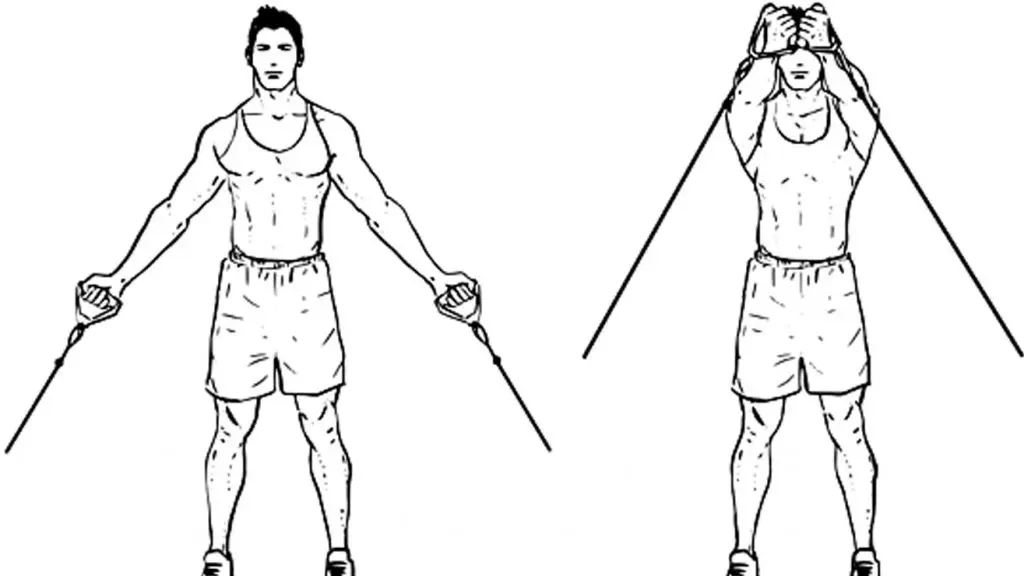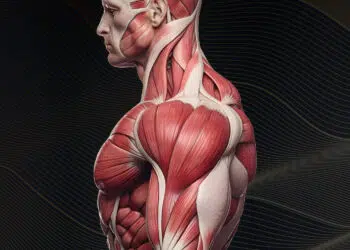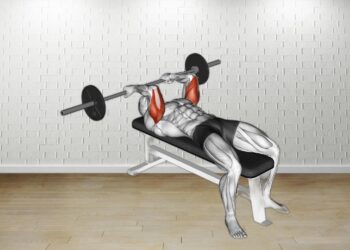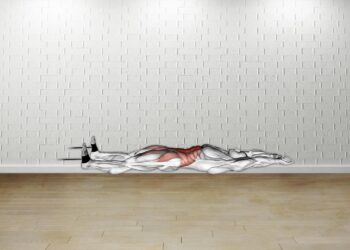It’s no secret by now that every Monday is National chest day, but it gets even better… every meathead (Or eager gym goer) is waiting in line for their turn at the bench press stations.
And, although this may be inconvenient for some people, you’re not worried at all… right? (Just nod in agreement).
You’re not worried because you know that there are many other great tools in the gym that you can utilize for maximum chest gains. Now, the bench press is amazing and should be in every training routine for making massive progress.
But, another effective movement which really stands out is… you guessed it, the cable crossover!
And many people think of the cable crossover as a finisher or just an exercise for getting a good pump. But little do they know; the cable crossover’s effectiveness has come as a surprise to many. And no longer will anyone pass it off as a ‘last’ exercise in any chest workout routine…
So, we’re going to explain how you can utilize the cable crossover machine to increase muscle hypertrophy and strength while staying injury-free. [1]
Level Up Your Fitness: Join our 💪 strong community in Fitness Volt Newsletter. Get daily inspiration, expert-backed workouts, nutrition tips, the latest in strength sports, and the support you need to reach your goals. Subscribe for free!
In this Exercise
- Target Muscle Group: Pectoralis Major
- Type: Strength
- Mechanics: Isolation
- Equipment: Cables
- Difficulty: Beginner/Intermediate
How to do Cable Cross-over:
- Attach two single grip handles to the cable machine at about chest level.
- Then, grab both handles and step forward so your arms are behind you and until you feel a slight stretch in your chest. Position one foot forward and one behind. Keep your elbows bent.
- Now, pull both cables together in a semicircular motion until they almost touch each other. Contract your chest muscles exhale during this portion of the exercise.
- Hold for a couple of seconds.
- Then, slowly allow your arms to return to the starting position until you feel a slight stretch in your chest muscles. Inhale during this portion of the exercise.
- Repeat for the desired number of reps.
Variations & Tips:
- Only allow the cables to come back far enough to feel a slight stretch in the chest muscles. Overstretching can cause a muscle tear which is very undesirable and will put you out of commission for a while.
- Keep your elbows bent to support your shoulder joints during the exercise.
- Start light and warm up sufficiently before increasing the weight as this will ensure safety and a pain-free workout.
- The cable cross-over is a great chest exercise which allows for an effective stretch and contraction in the chest muscles.
Cable Crossover for Muscle Hypertrophy
Now, you’re probably wondering what we meant by the cable crossover coming as a “surprise to many”. And we’ll explain…
An ACE-sponsored study led by Whitnee Schanke, M.S., John P. Porcari, Ph.D., and several researchers from the University of Wisconsin, La Crosse compared 9 of the most common chest exercises. (2)
They wanted to find out how effective each movement was for activating the Pectoralis Major (Largest muscle of the chest). (3)
These exercises included:
- Barbell Bench Press
- Pec Dec Machine
- Bent-Forward Cable Crossover
- Chest Press Machine
- Inclined Dumbbell Fly
- Dips
- Suspended Push-up
- Stability Ball Push-up
- Standard Push-up
Now, can you guess which three exercises elicited the highest Electromyography (EMG) activity in the Pectoralis Major? (4)
- The barbell bench press was first and there was no surprise there.
- The Pec Dec surprisingly came in second.
- The cable crossover came in third overall…

So, what does this mean? It means you can effectively train your pecs using all three exercises and experience relatively equal results.
“Essentially, you can use the barbell bench press, Pec deck or the cable crossovers interchangeably,” said John P. Porcari, Ph.D. He also mentioned that… “All three of those exercises are basically going to give you the same amount of muscle activation in the chest and are equally effective.”
The results of this study should be all the convincing you need to focus on the cable crossover more than you previously have been if you’ve neglected it.
Now, let’s get into the different angles for optimal chest training…
Utilizing Different Angles
If you’re new to training then you might be unfamiliar with how beneficial it is to train with varied angles.
Research shows an incline bench angle of 30-45 degrees to activate the upper chest to a slightly larger extent than when using a flat bench. But, we would expect the same angle to elicit similar gains when using the cable crossover, although we don’t have a study to support the cable movement. (5)
Now, the higher the cables are the more you’ll emphasize your lower chest. The lower the cables, and the more you’ll target the upper chest. A neutral cable attachment will work more of the mid to overall chest surface area. (5)
But here are a few tips to ensure you’re utilizing the angles properly…
- To work your lower chest, your hands should come down and meet at the lowest point possible (About mid thigh).
- For the upper chest, bring the cables as high as possible (Above your upper chest) to hit the upper pec muscle fibers.
- For the neutral position, your arms should meet directly out in front of you.
It’s best to use a combination during a chest workout to hit all areas. But, if you’re using the cable crossover in combination with other pressing exercises, cut down on your sets to focus on a variety of angles.
Now, we know you want to jump into the exercise but let’s talk about safety first…
Level Up Your Fitness: Join our 💪 strong community in Fitness Volt Newsletter. Get daily inspiration, expert-backed workouts, nutrition tips, the latest in strength sports, and the support you need to reach your goals. Subscribe for free!
Preventing Injury
The cable crossover and any fly-type movement can place your shoulders in a vulnerable position (It’s just the way it is). This can cause impingement issues which are no fun and will keep you out of commission for a while. (6)
And often times, it’s an exercise that is advised against but that doesn’t mean you should exclude it too. You just have to know your strengths and train according to your experience level.
Here are a few tips to keep you in the gym and away from the hospital…
- Warm-ups – Getting your shoulder joint warmed up is non-negotiable. A cold muscle has a much higher chance of resulting in an injury. So, do one very light set, followed by a light set, and then a moderate set before training heavy if you so choose to do so. (7)
- Beginner – If you’re just starting out, use light weights and get the form down before even considering training for muscle and strength benefits. Avoid heavy weight at all costs.
- Intermediate – If you’ve been training for a while now you still need to be careful with the weight loads and watch your form. Warming up and knowing how much is too much is essential to staying injury-free.
Your best bet is to stick with moderate to slightly heavy weight.
- Advanced – If you know what you’re doing, then good for you. But don’t get too macho and become careless because you can tear a pec or injure your shoulder no matter how experienced you are. The cable crossover is an excellent movement but maxing out is not an option.
Heed to this advice and you’ll prevent that pec tear or shoulder injury. But if you do feel discomfort from doing this exercise, stop immediately. You may have not warmed up properly or there might be another problem you might need to get checked out.
Train heavy but stick to a minimum of 6 reps.
Who Should Do The Cable Crossover?
Actually, anyone in good physical condition can safely perform the cable crossover.
But the key word here is ‘safely’ and this means training according to your level of training experience. Follow the above advice to avoid injury and get the best results possible. (8)
Now, if you have a shoulder injury then you should not be doing this exercise. Since the cable crossover provides less support to the rotator cuff than a press, for instance, it can be dangerous for the joint. (9)
Variations
1) Mid Chest Cable Crossover
- Attach a single grip handle to each side of the machine at armpit or shoulder level.
- Grab both handles and stand between the pulleys.
- Take a few steps forward and put your leading foot in front for balance.
- With your elbows slightly bent, bring both hands together by moving arms in a semicircular motion while contracting your chest.
- Hold for 2 seconds.
- Reverse the motion and bring arms back until you feel a slight stretch in your chest.
- Repeat this movement for your desired number of repetitions.
2) Low Cable Crossover
- Attach a single grip handle to the lowest notch on the cable machine.
- Grab both handles and stand between the pulleys.
- Bend your elbows slightly and place one foot forward.
- Now, bring both arms upward above your upper chest while contracting your upper chest.
- Hold for 2 seconds.
- Lower your arms back down until you feel a slight stretch in your chest.
- Repeat this movement for your desired number of repetitions.
3) High Cable Crossover
- Attach a single grip handle to the highest notch on each side of the cable machine.
- Grab both handles and stand between the pulleys.
- Bend your elbows and place one foot forward.
- Now, contract your chest muscles and bring both pulleys down to mid-thigh level.
- Hold for 2 seconds.
- Raise both arms back up with elbows flared out until you feel a slight stretch in your chest.
- Repeat this movement for your desired number of repetitions.

Well, there you have it. Now you know how to perform the cable crossover with the three common training angles.
Now for a few workouts, you can try…
So, you want to know how you can annihilate your chest muscles for a juicy chest workout huh?
Well, don’t worry because we’ve got you covered with a few different training methods you can use to maximize the cable crossover for beastly gains!
Basic Cable Crossover Workout
Do this routine in addition to your main, compound chest exercises….
- Low cable crossover 2 x 10-12 (Rest 30 seconds between sets)
- Mid cable crossover 2 x 10-12 (Rest 30 seconds between sets)
- High cable crossover 2 x 10-12 (Rest 30 seconds between sets)
Cable Crossover Ladder Workout
You only need to do one set of the ladder workout since it’s very intense. Pick a weight you can perform 8-12 reps with and stick with it for the entire workout.
- Attach two handles to the lowest notch on each side of the machine.
- Do incline crossovers until you reach failure.
- Move the handles up a notch and repeat with the same weight until failure.
- Perform this sequence until you reach the very top, going to failure each time.
The ladder is a great way to really bun out the chest muscles and you can also use it to pre-exhaust your chest before doing heavy chest press movements.
Final Thoughts
We hoped you enjoyed all this muscle-inducing information about the cable crossover…
As you have learned, there are several ways to utilize this exercise for maximum gains and you can, in fact, do so safely.
And despite what people have thought about the cable crossover before, you absolutely can build plenty of muscle and strength with it. So, feel free to use it as a main exercise in your chest workout. But, it’s still a great warm-up exercise as well and you’ll see results either way.
Practice good form and train smart to see optimal gains with the cable crossover…
Interested in measuring your progress? Check out our strength standards for Bench Press, Dumbbell Fly, Chest Press, and more.









Good One !! This is actually a super article ! Really good workout can be achieved with cable cross overs before the compound movements.
Why would the study not include DB Bench Press? That makes absolutely no sense.